From summer 2010 to fall 2012, Standard was out of balance. Caw Blade was an obvious problem and the last Standard deck to be banned. However, there was another, more pernicious threat that both predated and outlived the dominance of [casthaven]Jace, the Mind Sculptor[/casthaven] and [casthaven]Stoneforge Mystic[/casthaven]. This threat took many forms, but all knew its name: the titans.
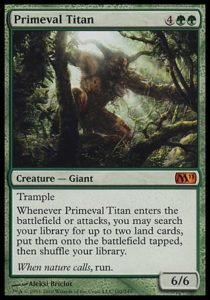
The titans were dominant players in Standard for their entire tenure. There were seven titans in all: the five titans of M11 (which were then reprinted in M12) and the two pseudo-titans of Scars block: [casthaven]Consecrated Sphinx[/casthaven] and [casthaven]Wurmcoil Engine[/casthaven]. They all cost six mana and produced a large amount of value. While each titan had its specialty (with [casthaven]Primeval Titan[/casthaven] and its best friend, [casthaven]Valakut, the Molten Pinnacle[/casthaven] as the most dominant titan and [casthaven]Frost Titan[/casthaven], the titan-slayer, as the weakest), all were format-defining and stifling.
Together, the titans created two major problems for Standard, lasting the duration of their legality.
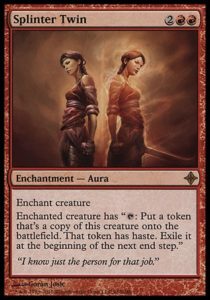
Stifling Diversity
The titans were better than any other 5+ mana options. If you put an expensive spell in your deck and it wasn’t a titan, you were probably doing it wrong (with [casthaven]Elesh Norn, Grand Cenobite[/casthaven] being a bit of an exception/seven mana titan). Given that every competing spell failed the Titan Test (which was, simply, “Is this better for your deck than a titan?”), the titans drastically constricted deckbuilding options. You were either playing deck with titans, or your curve stopped at 4.
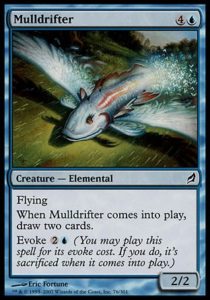
Immediate, Massive Value
Titans produced so much value upon entering the battlefield that 1-for-1 removal wasn’t a good enough answer. If a [casthaven]Grave Titan[/casthaven] or [casthaven]Sun Titan[/casthaven] was cast, you couldn’t beat all of the value it produced with a [casthaven]Doom Blade[/casthaven] (which couldn’t even kill the Grave Titan). A [casthaven]Day of Judgment[/casthaven] could answer most of the titans, but it was a poor answer to [casthaven]Consecrated Sphinx[/casthaven] and [casthaven]Wurmcoil Engine[/casthaven], and a resolved [casthaven]Primeval Titan[/casthaven] was likely to have killed you or set up your demise all by itself. Removal just couldn’t effectively answer the varied and powerful abilities of the titans.
Oftentimes, the only way to stop your opponent from beating you with a titan was to ensure that it was never cast. Standard lacked strong discard like [casthaven]Thoughtseize[/casthaven] (and [casthaven]Thoughtseize[/casthaven] does nothing against the top of the deck), so the only real answer to titans was countermagic like [casthaven]Mana Leak[/casthaven] or to go underneath the titans with [casthaven]Goblin Guide[/casthaven]. This also constricted deckbuilding options: you either needed to:
- Kill before turn 6
- Resolve your titan first
- Have countermagic
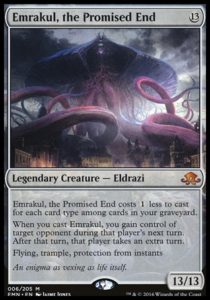
Today’s Titans
Looking at today’s Standard environment, I see that these problems have returned. There exist threats which are difficult to answer, threats which produce too much value immediately, and threats which essentially win the game when they enter the battlefield. The threats are substantially more varied this time around, but they also come down earlier and demand even more varied answers.
The two biggest offenders are [casthaven]Gideon, Ally of Zendikar[/casthaven] and [casthaven]Emrakul, the Promised End[/casthaven]. Both can come down on turn 4 (Emrakul and [casthaven]Aetherworks Marvel[/casthaven] are best buddies), produce an enormous amount of value, and are hard to answer. Moreover, they’re difficult to answer in very different ways: Emrakul is immune to instant-speed removal and gives you a turn to demolish your opponent’s plans, while Gideon is immune to most forms of removal and nothing answers both him and his initial token concurrently.
Once again, we’re living in an era where the only clean answers to threats are discard (which is a bit more powerful than it was in 2010) and countermagic (which is much weaker, but still essential). The big differences are that the threats come down much sooner and the countermagic is slower and much weaker: [casthaven]Revolutionary Rebuff[/casthaven] is a terrible [casthaven]Mana Leak[/casthaven], [casthaven]Void Shatter[/casthaven] is a [casthaven]Cancel[/casthaven], and [casthaven]Summary Dismissal[/casthaven] is the only clean way to answer Emrakul but is only guaranteed to work if you’re on the draw.
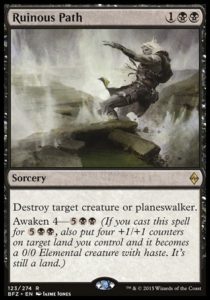
I think that this current Standard format is an unintended consequence of two factors: certain cards being a bit more powerful than R&D had expected (which happens every Standard environment and is pretty much guaranteed to happen, given that it’s impossible to perfectly gauge power level*) and removal being a bit weaker than R&D intended (the weakening of removal being one of the smartest decisions R&D made several years). Magic is better when people can’t just jam [casthaven]Lightning Bolt[/casthaven] or [casthaven]Doom Blade[/casthaven] in all of their decks and kill whatever they want with maximum efficiency. It’s good for Magic when there is no universal best kill spell.
*without a scouter B)
The problem now, as it was with the titans, is that there are threats more powerful than any answer. It’s one thing for a card to be strong, to provide card advantage, and to be difficult to answer—it’s another thing when a card is all three and nearly impossible to answer, and even worse when multiple cards are like that but are answered in very different ways. Frankly, I can’t even think of many Magic cards that would easily answer these threats other than even more powerful countermagic or more comparable threats. Just like it was during the reign of the titans.
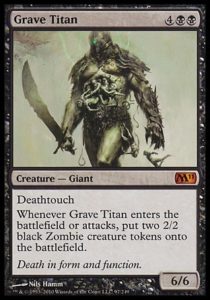
Magic design happens in cycles. It’s worthwhile to look back at the successes and missteps of the past to iterate on and improve design. In this particular case, I believe that Magic has inadvertently dipped its toes back into 2010, and as with that time, the only recourse is to wait until the major offenders rotate out. At least this time, the odds of Gideon or Emrakul being immediately reprinted the following year are pretty small.
—Zachary Barash
Zachary Barash is a New York City-based game designer. He’s played Magic since 1994, he loves Limited and drafts every available format (including several that aren’t entirely meant to be drafted). He quite enjoys [casthaven]Revolutionary Rebuff[/casthaven], since that card demonstrates just how insanely good [casthaven]Mana Leak[/casthaven] and [casthaven]Miscalculate[/casthaven] are.

